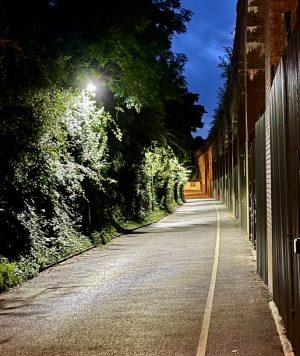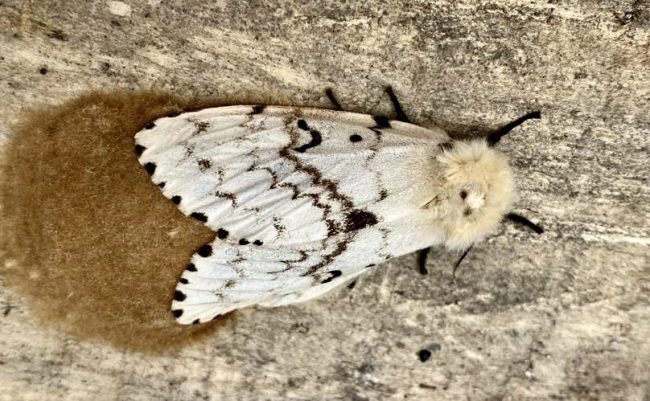Light in the darkness

Compared to past centuries, we live in a bright, highly illuminated world where even our nights are bright. Apart from the lights in our homes and offices, there are thousands of street lights. In many places, the natural 'night time' environment is no more. This 'artificial light' pollution has increased significantly in recent times (as indicated by research led by the University of Exeter).
Street lights, especially the newer LED ones, may be affecting various night flying insects. It is a fact that insect populations in general are under threat from
- The loss of woodlands, forests, heathlands and meadows (often to agriculture)
- The intensive use of pesticides
- Climate change / extreme weather events
- Pollution of rivers / lakes (eg. Nitrate / phosphate pollution leading to eutrophication).
Now the intensive use of artificial light is thought to be affecting night flying insects, such as moths. Moth populations are in decline, for example, the Buff Arches population, has declined in number by 62% since the 1970s. However, the effects are not limited to moths but also birds, bats and wildlife that feed upon them (or their caterpillars).
The UK Centre for Ecology and Hydrology suggests that streets bathed in light may:-
- Deter nocturnal moths from egg laying.
- Make the night flying moths ‘easier targets’ for predators (such as bats).
- Affect the feeding habits of moth caterpillars.
A number of investigations have been initiated by CEH, Newcastle University and Butterfly Conservation. The work involved surveys of grassland and hedgerows in southern England (Thames Valley) some lit by streetlamp, others unlit. The areas that were exposed to night time lights had roughly half the number of caterpillars as compared to the unlit areas; (the hedgerows reduction was 47%, and 33% in grass margins). In another investigation, LED lighting was set up in fields, caterpillars numbers in such fields were reduced. It would seem that night time light affects the feeding behaviour of caterpillars. Quite how and why is to be determined.

LED lights are being using more and more, as they are brighter, cheaper to run and more energy efficient. LEDs emit more blue light than older forms of lighting. It is likely that the impacts of light pollution on night flying insects will increase. This, in turn, will effect of other species, such as hedgehogs which need many, many caterpillars to feed themselves and their young.
The loss of insects, such as bees, ants and beetles is occurring at a worrying rate, indeed faster than the loss of mammalian, avian or reptilian species. The loss of insects has far reaching consequences for ecosystems - as they provide food for many vertebrate species and they acts as pollinating agents for many flowers and crops.
Comments are closed for this post.
